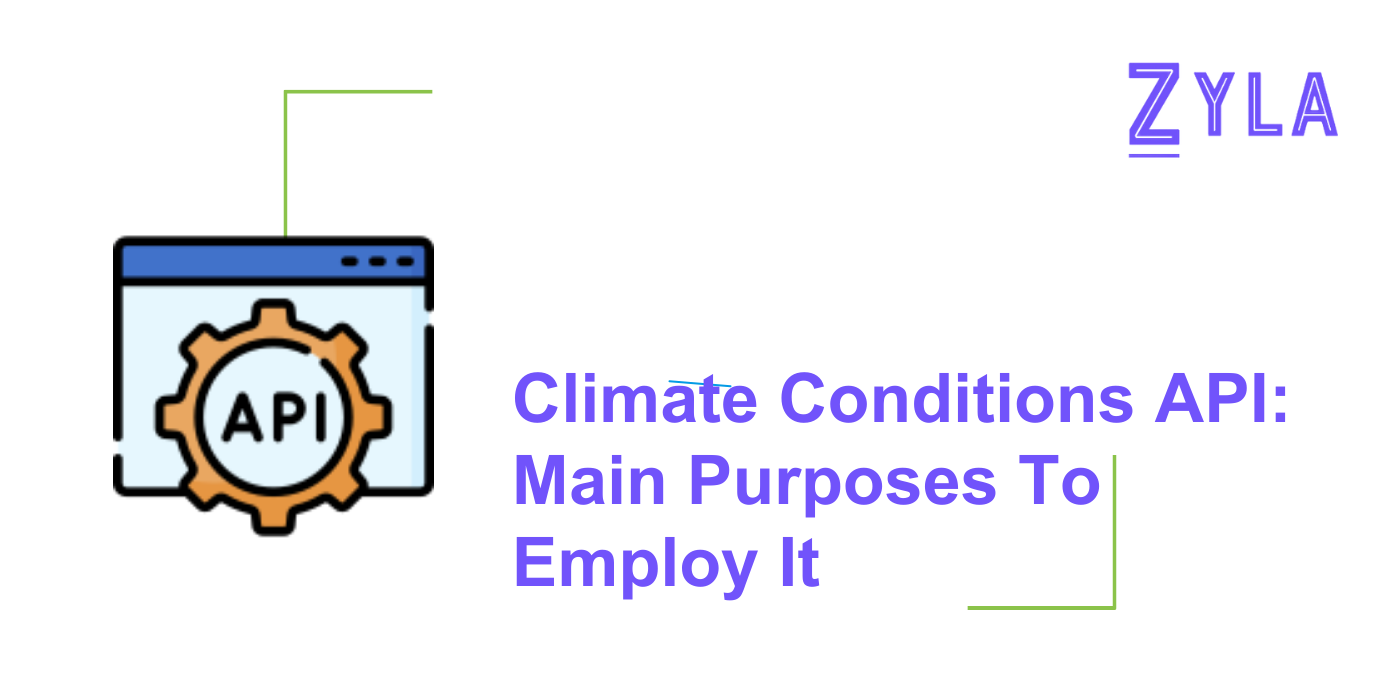Climate Conditions API: Main Purposes To Employ It

In today's digital age, access to accurate and up-to-date climate information is crucial for a variety of applications and industries. The Climate Conditions API offers a convenient way to retrieve essential weather data for a wide range of purposes. In this blog post, we will delve into the main purposes of employing the Climate Conditions API and how it can benefit users across different sectors.
Weather Forecasting and Analysis
Enhancing Weather Prediction Models
One of the primary purposes of employing the Climate Conditions API is to enhance weather forecasting and analysis. By accessing real-time weather data provided by the API, meteorologists and weather researchers can improve the accuracy of their prediction models. This data can include parameters such as temperature, humidity, wind speed, and precipitation, which are essential for creating reliable weather forecasts.
Supporting Climate Studies
Climate scientists and researchers can also benefit from the Climate Conditions API by utilizing historical weather data to conduct climate studies and analyze long-term climate trends. By accessing a vast repository of weather information through the API, researchers can gain valuable insights into climate patterns and changes over time.
Agricultural Planning and Crop Management
Optimizing Agricultural Practices
For farmers and agricultural professionals, the Climate Conditions API can be a valuable tool for optimizing agricultural practices and crop management. By monitoring weather conditions such as temperature, rainfall, and humidity, farmers can make informed decisions regarding planting, irrigation, and pest control. The API can provide real-time weather updates to help farmers mitigate risks and maximize crop yields.
Improving Harvest Forecasts
The API can also assist in improving harvest forecasts by providing accurate weather data that can influence crop growth and development. By analyzing weather patterns and trends, farmers can anticipate potential challenges such as droughts or excessive rainfall, allowing them to adjust their strategies accordingly and minimize losses.
Travel and Tourism Industry
Providing Travel Weather Updates
Travelers and tourists can benefit from the Climate Conditions API by accessing travel weather updates for their destination. Whether planning a vacation, a business trip, or a weekend getaway, users can retrieve current weather information through the API to make informed decisions about their travel plans. This can include checking temperature forecasts, precipitation chances, and wind conditions to ensure a smooth and enjoyable travel experience.
Enhancing Travel Safety
The API can also contribute to enhancing travel safety by providing real-time weather alerts and warnings. Travelers can stay informed about adverse weather conditions such as storms, hurricanes, or blizzards, allowing them to adjust their travel itinerary and take necessary precautions to ensure their safety and well-being.
Outdoor Event Planning
Weather Monitoring for Events
Event organizers can employ the Climate Conditions API to monitor weather conditions for outdoor events such as concerts, festivals, and sports competitions. By accessing current weather data through the API, organizers can preemptively plan for potential weather disruptions and make informed decisions about event logistics, timing, and safety measures.
Mitigating Weather Risks
By leveraging the API's weather data, event planners can mitigate weather risks and ensure the success of their outdoor events. Monitoring parameters like temperature, wind speed, and precipitation can help organizers proactively address weather-related challenges and implement contingency plans to minimize disruptions and keep attendees safe and comfortable.
In conclusion, the Climate Conditions API serves as a valuable resource for a multitude of purposes across various industries and applications. From weather forecasting and agricultural planning to travel safety and event management, the API offers users access to essential weather data that can inform decision-making, enhance productivity, and improve overall outcomes. By understanding the main purposes of employing the Climate Conditions API, users can harness its capabilities to meet their specific needs and leverage the power of real-time climate information for a wide range of practical applications.






